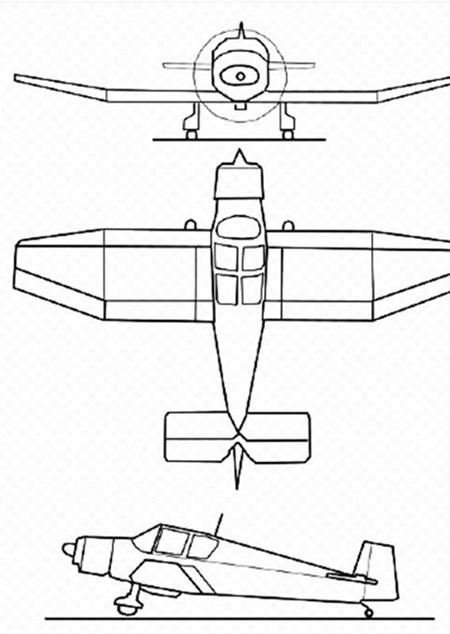Rebuild an Airplane/Start a Flying Club
By Bill MacKay
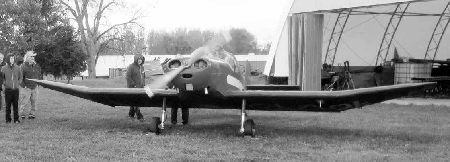
Ayrborne Aviators
The Ayrborne Aviators is a group of pilots who meet at Lubitz Flying Field, a small grass strip airport (CLB2) in southern Ontario, also called Edwards's Air Base. The Ayrborne Aviators is also Ultralight Pilots Association of Canada Squadron 5 and EAA Chapter 115.
A hearty weekly Saturday morning breakfast of bacon, eggs, hash browns, toast, and coffee provides an opportunity for a group of builders, pilots, and students to meet, discuss their aviation interests and, weather permitting, fly their airplanes and powered parachutes.
It was at one of these breakfast meetings in the fall of 2016 that the decision to purchase and rebuild the Jodel D-11 was made.
Decision and Acquisition
The purchase of an airplane is a serious matter normally requiring a significant amount of research and planning. What is the reputation of the airplane being considered, what is the history of the specific airplane, what is its condition, how much will it cost to restore the airplane to flying condition, how will the rebuild be accomplished, who can do the work, how long will the rebuild project take?
In addition to all of the rebuild questions one should know how the airplane will be registered/owned and how it will be operated. Just answering all these questions and planning the work can take weeks or even months.
Well, I guess that is likely how a project should be undertaken, but that's not exactly how it took place at that breakfast meeting. It sort of went like this:
"There is a Jodel D-11 available for purchase," Bill said. "It has been sitting in a barn for 13 years, might anyone be interested in purchasing it?" No one expressed interest.
"Why don't we purchase it as a learning project, assess its condition, and possibly rebuild it?" Ed asked. "It could be a club project."
After a quick call to the owner, a price of $750 was agreed upon and a motion was passed to purchase the aircraft. The entire process and decision-making likely did not take much longer than 15 minutes. So much for all the careful investigation and planning that should have taken place.
The following Saturday a group of our members and a couple of trailers assembled where the airplane was located, approximately an hour's drive from Lubitz. Extracting the airplane from the barn without the barn collapsing on us was a challenge, but the airplane was soon sitting outside ready to be disassembled for transport.
A lesson learned here as we look back is to take lots of detailed pictures before disassembly and have lots of plastic bags and labels to identify and store the parts. A few hours later with the wing and fuselage separated these two main components were loaded on trailers for their journey back to our home base.
Disinfection and Assessment
A certain amount of disinfecting was required, and none of the upholstery will be reused since raccoons and mice had been calling the airplane home for a while.
Once the airplane was disinfected, the process of inspecting it began. To our pleasant surprise, the wood and fabric structure appeared to be sound. The landing gear was in need of rebuilding, the brakes needed to be replaced, and we needed a new set of tires. The windshield was in bad shape, and the gas tank had some corrosion and a leak.
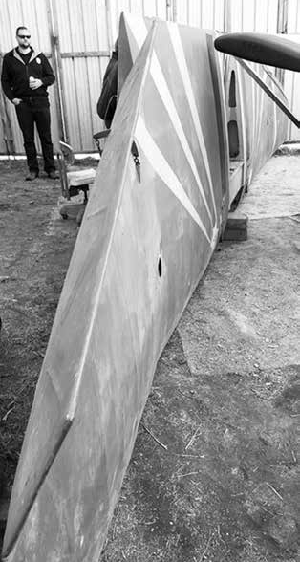
The Continental A65 engine was removed, and upon closer inspection we decided that a few parts would be needed before it would run again. Sitting for 13 years without being run unfortunately permitted a little corrosion to take place. The parts list included: four cylinders, a camshaft, mags and plug wires, an exhaust system plus a bunch of smaller parts before we could start rebuilding the engine. Since the engine was totally disassembled we might as well get a new set of rings and bearings and a new gasket set before putting it back together.
We started developing an estimate for how much it would cost to rebuild the engine and fix the other items, which takes us to the next topic — where do we get the money and what do the folks who provide the financing get for their investment?
Financing
The financing aspect of our project is an area where we learned some lessons. The original $750 investment to purchase the airplane was provided by Ayrborne Aviators, but the group did not have sufficient finances to complete the rebuild. So, we needed an additional source of funds.
Our first approach was to identify a subgroup of members who would contribute financially and in manpower to the rebuild. For their financial and manpower contributions, these supporters would have a share in ownership of the airplane. A system was set up using a Google spreadsheet to track financial and manpower contributions to the rebuild. This started out with each of about a dozen supporters contributing $200.
An agreement was drafted that identified how members could join or withdraw from the project and how we would make decisions about the rebuild. Funds were kept in the group's bank account, and a separate ledger was set up to track the funds.
At this point, the group wasn't sure they would be keeping the airplane after the rebuild. It might be sold in which case everyone would get their money back. If the group decided to keep the airplane and fly it, a separate organization would be have to be created.
This accounting method could work if a corporation were to be set up to own the airplane, and it would provide a good system if members were contributing significant funds to the project, but as this would be a low-budget rebuild we decided on a more economical solution.
Ownership
The decision was made to set up an Ontario not-for-profit corporation to own the airplane. We were able to set up the not-for-profit corporation without incurring any legal fees, just the $155 provincial setup fee and a NUANS name search fee. The result was the formation of the C-FVOF Flying Club in April 2017.
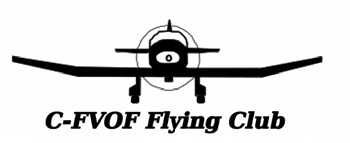
A major change resulting from the switch to the not-for-profit corporation was that those financing the rebuild would not have any equity or ownership of the airplane. Members of a not-for-profit corporation are not permitted to benefit financially from the corporation. The original financial supporters who elected to stay with the project were granted full membership in the flying club on the basis of their contributions. Two supporters who withdrew from the project were refunded their contributions. New members joining after formation of the flying club are required to pay a $1,000 initiation fee. The annual member dues were set at $300 for the 2018 calendar year, which should be sufficient to pay for hangar space, insurance, and any other administrative expense. We estimate the cost to fly the airplane, once the rebuild is completed, will be $45 per hour including fuel.
Rebuilding the Jodel D-11
One of the objectives of undertaking the rebuild was to provide a learning opportunity for the group; it has certainly provided that. The financial supporters who eventually became C-FVOF Flying Club members benefited most, but other club members assisted, contributed parts, and learned from the project.
Since the beginning of the rebuild project, we maintained a rebuild document that identified a categorized list of the required work, decisions about how to perform the work, and members who volunteered to undertake various aspects of the rebuild. This document has been updated weekly or every few weeks throughout the project and was emailed to all members. A short meeting following the regular Saturday morning breakfasts was used to receive status reports and make decisions about our next steps.
Approximately one-third of our members already own one or more airplanes and have considerable experience, which was extremely valuable, and even essential, to the success of the rebuild project. Their talents were put to use measuring the tolerances of the engine, ordering parts and assembling the engine. Volunteers took parts home and painted or rebuilt them as required (gas tank, landing gear, brakes, windshield, etc.) and then installed the rebuilt parts on the airplane. We are thankful to others who, although not technically part of the rebuild group, contributed financially, provided parts (compass, instruments and instrument panel, mufflers) and advice. So what is the current status? The rebuild work has been completed, the engine has been run, and it has good oil pressure and sounds good. Taxi testing was completed, but because there were some delays in obtaining insurance, it was not possible to conduct flight testing before the cold weather set in. Insurance has now been obtained so, from a legal perspective, it is ready to fly. The airplane likely will not object to flying in minus 20 degrees Celsius weather. In fact, it will likely perform quite well, but our test pilot prefers to wait for warmer weather before flight testing the open-cockpit Jodel D-11.
What's Next?
Upon successful completion of the flight testing, we will begin the process of checking out individual club members to determine who is qualified and authorized to fly the Jodel; it will be made available for qualified members to fly.
Rebuilding an airplane and operating a flying club with the responsibility of maintaining and operating an airplane, are very different types of operations that will have their unique challenges. We developed draft operating procedures using EAA's guidance for not-for- profit flying clubs and information gathered from other flying clubs. We will be in a better position to report on operating our flying club after our airplane is airborne and we have operated it for a season.
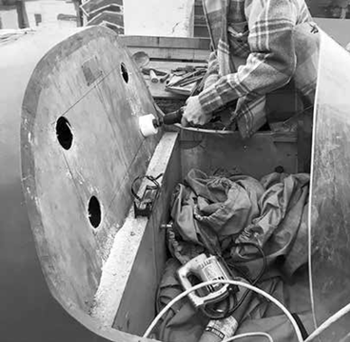
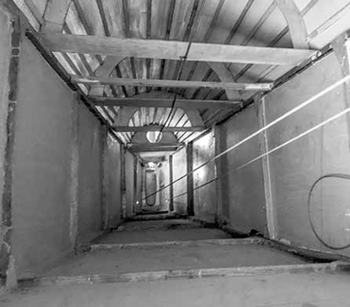
In summary, even with the airplane still on the ground, I consider the Jodel rebuild project and formation of the C-FVOF Flying Club a success. It has provided a reason for our members to get together over the past 18 months to discuss the rebuild project and flying club formation. This has provided an excellent learning opportunity, from my perspective.
Inspecting and rebuilding the Jodel provided an excellent hands on learning opportunity as most of us have touched and worked with every part of the airplane from propeller to rudder. We have also learned about the many skills our members have and now know each other better as a result of the rebuild project.
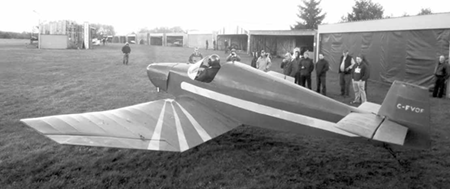
Find more photos on Flickr.
